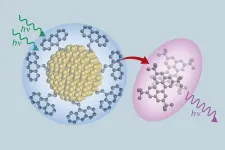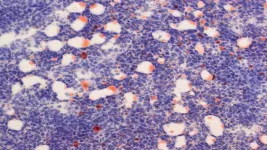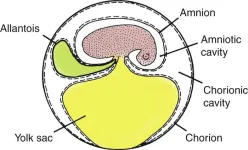(Press-News.org) Drugs used to treat rare conditions are earning pharmaceutical companies almost as much as those marketed to the general public, according to a researcher at West Virginia University. Sean Tu, a College of Law professor found lucrative so-called “orphan” drugs earn manufacturing tax credits, have longer patent exclusivities and face easier Food and Drug Administration review.
Orphan drugs treat diseases that affect fewer than 200,000 Americans. In addition to tax credits, Congress has incentivized the pharmaceutical companies that manufacture orphan drugs with a waiver of prescription drug user fees and by offering seven years of market exclusivity after the drug is approved, rather than the standard five years.
Orkambi is an example of an orphan drug used to treat cystic fibrosis, a genetic disorder that affects the lungs and other organs. Only around 30,000 Americans have been diagnosed, but Tu’s data shows the drug made $5 billion over the last five years. In contrast, Entyvio, a drug used to treat Crohn’s disease or ulcerative colitis, also made $5.5 billion over the last five years, but treats around one million Americans.
“There has been a dramatic increase in the number of orphan drugs over the past three decades,” Tu said.
In the late 1980s, 5% of new drugs were directed to orphan indications. That number has risen to 43% in 2023.
Tu’s findings are published in the Journal of the American Medical Association.
He said pharmaceutical companies have every reason to take advantage of the range of incentives.
“They get fast-track FDA approval and also get to use ‘surrogate endpoints,’” Tu said. “These are signs that indicate a treatment is working without having to conduct lengthy, large-scale clinical trials. Scientists can use smaller groups of patients for shorter time periods, thereby dramatically lowering the costs associated with FDA approval.”
However, the range of incentives has altered the manufacturing and distribution of orphan drugs.
“I can either charge $1 to a million people or I can charge one person a million dollars. I’m still making a million dollars at the end of the day. The question is why we should be giving these drug companies all these advantages and all these bonuses when they’re making just as much money on orphan drugs as they are on their normal non-orphan drug indications.”
The purpose of the Orphan Drug Act — enacted in 1983 to spur development of drugs for rare diseases such as Huntington’s disease, Tourette syndrome and myoclonus — was to compensate pharmaceutical companies for doing research and investing in orphan drugs. Congress assumed drug companies would not make profits when investing in rare diseases.
“This assumption was incorrect,” Tu said. “The Orphan Drug Act came from a good place and we still need companies to invest in orphan drugs. However, we shouldn’t have a system where we only invest in orphan drugs. Under the current system, we are getting more and more drugs developed for rare diseases, leaving other populations increasingly marginalized.”
Another problem is that many rare diseases are only treated by one drug. In such cases, insurance companies must cover them, so pharmaceutical companies can charge high prices knowing they’ll be compensated.
“If I’m trying to maximize social welfare, I want to help the most people I can with the limited resources I have,” Tu said. “So am I going to invest my limited resources in drugs that affect only 200,000 people, or am I going to invest in drugs that affect 300 million people? Right now, the government is over-incentivizing drug companies to invest in the 200,000 people, and I don’t think that’s a great way to spend our money.”
END
WVU research shows how much pharmaceutical companies are capitalizing on rare drug incentives
2023-06-12
ELSE PRESS RELEASES FROM THIS DATE:
Planet orbiting 2 stars discovered using new technique
2023-06-12
COLUMBUS, Ohio – An international team of astronomers is the first to apply an old technique to discover a new type of planet that orbits two stars – what is known as a circumbinary planet.
As an added bonus, researchers found a second planet that is orbiting the same two stars, which is only the second confirmed multi-planet circumbinary system found to date. The study was published today in the journal Nature Astronomy.
Circumbinary planets were once relegated to only science fiction, but thanks to data collected from NASA’s Kepler mission, astronomers now know that multiple star systems are ...
Railways could be a key 'utility player' for backup power
2023-06-12
– By Christina Nunez
The U.S. electric grid faces simultaneous, evolving pressures. Demand for power from the grid is increasing as people adopt electric cars and building energy is transitioned from gas to electricity. At the same time, climate change is driving more extreme weather. Events like the 2020 heat wave that led to rolling blackouts in California are relatively infrequent, but they are happening more often – and utilities need to be ready for them.
New research points to a flexible, cost-effective option for backup power when trouble strikes: batteries aboard trains. A study from the U.S. Department of Energy’s Lawrence Berkeley National Laboratory ...
Hines studying male victims of intimate partner violence in racial/ethnic minority communities
2023-06-12
Denise Hines, Associate Professor, Social Work, received funding for the study: "Understanding Male Intimate Partner Violence Victims from Racial/Ethnic Minority Communities."
Hines will lead a four-phase study on the experiences of male victims of intimate partner violence, with a specific focus on men from racial/ethnic minority communities.
She will conduct the study in four, simultaneous phases.
In Phase 1, Hines will conduct a survey study of male Intimate Partner Violence (IPV) victims, including 300 White men, 300 Black men, and 600 Latino men from both immigrant and non-immigrant communities within the United States. The survey will ...
Becker receives funding for scientific support in solar physics
2023-06-12
Peter Becker, Professor of Astrophysics and Space Sciences, received funding for: "Scientific Support in Solar Physics, Remote Sensing, Space Weather, High-Energy Astrophysics, and Associated Scientific Fields."
As part of this project, Mason researchers will conduct research in collaboration with the Naval Research Laboratory (NRL).
Areas covered by this research include: space sciences research (encompassing solar physics and studies of the integrated Sun-Earth system); computational physics and computational fluid dynamics; high-energy astrophysics; instrumentation ...
Baldimtsi conducting collaborative research focused on cryptographic accumulators and revocation of credentials
2023-06-12
Foteini Baldimtsi, Assistant Professor, Computer Science, received funding from the National Science Foundation for the project: "Collaborative Research: SaTC: CORE: Medium: Cryptographic accumulators and revocation of credentials."
The goal of the project is to design efficient revocation mechanisms for the Web PKI and beyond.
Baldimtsi and her collaborators will tailor cryptographic accumulators to the problem of credential revocation making certificate revocation mechanisms ...
Mason researchers receive funding for collaborative mobile immersive computing research infrastructure for multi-user XR
2023-06-12
Four Mason researchers received funding from the National Science Foundation for the project: "Collaborative Research: CCRI: New: CoMIC: A Collaborative Mobile Immersive Computing Research Infrastructure for Multi-user XR."
Bo Han, Associate Professor, Computer Science; Parth Pathak, Assistant Professor, Computer Science; Lap-Fai (Craig) Yu, Associate Professor, Computer Science; and Songqing Chen, Professor, Computer Science, are designing and developing the infrastructure for Collaborative ...
New material transforms light, creating new possibilities for sensors
2023-06-12
A group of scientists and engineers that includes researchers from The University of Texas at Austin have created a new class of materials that can absorb low energy light and transform it into higher energy light. The new material is composed of ultra-small silicon nanoparticles and organic molecules closely related to ones utilized in OLED TVs. This new composite efficiently moves electrons between its organic and inorganic components, with applications for more efficient solar panels, more accurate medical imaging and better night vision goggles.
The material is described in a new paper in Nature Chemistry.
“This process gives us a whole new way of designing ...
The latest weapon against cancer is … a keto diet?
2023-06-12
Dietitians say a keto diet could help you lose up to 10% of your body weight. These high-fat, low-carb meal plans trick the body into burning its own fat. They could also help fight a variety of cancers by starving tumors of the glucose they need to grow. On the surface, this seems ideal. But research suggests these diets may have a deadly, unintended side effect for cancer patients.
In mice with pancreatic and colorectal cancer, keto accelerates a lethal wasting disease called cachexia. Patients and mice with cachexia experience loss of appetite, extreme weight loss, fatigue, and immune suppression. The disease has no effective treatment and contributes to about 2 million ...
Which came first: the reptile or the egg?
2023-06-12
The earliest reptiles, birds and mammals may have borne live young, researchers from Nanjing University and University of Bristol have revealed.
Until now, the hard-shelled egg was thought to be the key to the success of the amniotes - a group of vertebrates that undergo embryonic or foetal development within an amnion, a protective membrane inside the egg.
However, a fresh study of 51 fossil species and 29 living species which could be categorised as oviparous (laying hard or soft-shelled eggs) or viviparous (giving birth to live young) suggests otherwise.
The findings, published today in Nature Ecology & Evolution, show that all the great evolutionary branches ...
Determining how a sugar molecule can affect cancer cell response to chemoradiotherapy
2023-06-12
WASHINGTON --- Researchers at Georgetown University’s Lombardi Comprehensive Cancer Center and colleagues who have been exploring the complexities of biochemical pathways involved in cancer development have found that a form of glucose, a type of sugar, is intricately linked to a pathway used to build DNA molecules. When this pathway is overactive, it can lead to cancer and resistance to chemoradiotherapy.
The findings appear June 12, 2023, in Nature Chemical Biology.
“For a good while, my lab has been exploring cell signaling and DNA transcription mechanisms by which cellular metabolism changes in response to environmental and genetic cues, with the goal of designing ...





